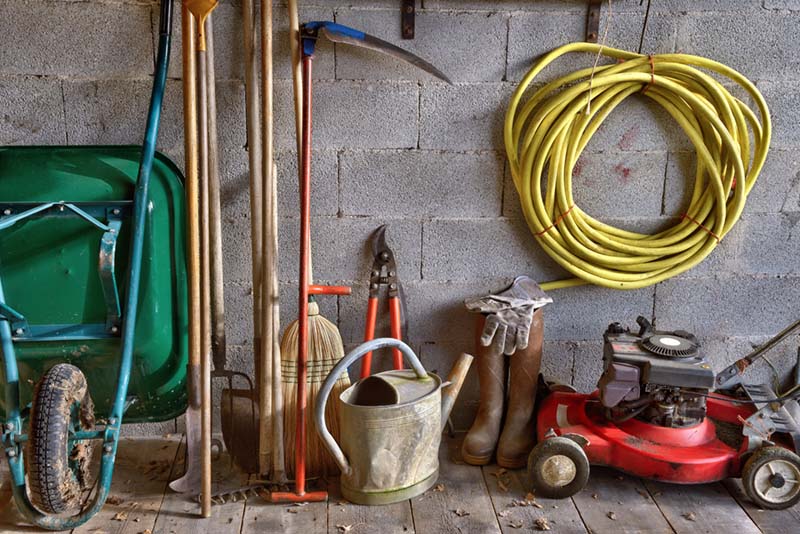As strange as it sounds, preparing your soil for a vegetable garden is a lot like preparing a house for a sale. Just as you'd spend time and money adding value to a house, you can expect to do the same for a decent garden.
There's an old saying that goes something like: Don't put a five-dollar plant in a fifty-cent hole. Plants have undoubtedly become more expensive since that saying was coined (pun fully intended), but the point is that when it comes to planting, you get what you put in.
Unless you have perfect soil with no weeds or rocks standing in your way, preparing a garden bed can be really hard work. The good news is that if you do it right the first time, gardening will only get easier in time. Besides, you'll never regret turning an impenetrable thicket of weeds into a garden of fresh veggies, flowers and foliage.
For a great garden bed, you'll need an excellent location, sturdy tools, cleared obstructions, great soil, hard work and patience. Don’t worry - it gets easier with every year.
Location, location, location
You've heard it all before about real estate, and the same is true for plants. A tomato plant grown in well-drained, rich soil with plenty of sunshine will likely thrive, while one planted in dry shade or a soggy spot will almost definitely die.
Also consider convenience and aesthetics. Plant vegetable beds near the house since they'll be used often, and plant seasonal flowerbeds where they can be enjoyed up close.
Invest in great tools
There are a lot of cheap garden tools out there, but you really do get what you pay for. Choose a hefty shovel with a sharp point, and it will stand up better to tough roots and stems.

If you have tough roots, weeds and shrubs to remove, you might want to consider getting a mattock. It's like a cross between an axe and a pickaxe, and perfect for heavy-duty garden work.
Clear for takeoff
Once you've found the perfect place and the right tools, it's time to break ground. There are two ways to do this.
Double digging is one method. It’s labor-intensive, but if you're cursed with rocks or clay in your soil, it will reduce work in the long run and lead to healthier plants. Dig up a spade-deep layer of dirt, place it on a tarp, and remove any roots, stems or rocks. Dig and loosen another layer of soil, and return the top layer along with well-rotted compost and topsoil. One downside to the digging method is that weed seeds are brought into the mix, which can compact and destroy the soil structure.
If you're willing to wait a season or two, try the no-dig method. Smother the grass with cardboard and newspaper, before topping that with compost and topsoil. This method requires patience, and is more difficult with tough lawns like centipede and St. Augustine grass, but your back and the soil will thank you later.
Add value to your dirt
When you plant a new garden bed, add plenty of compost. Your lawn's existing soil is probably nothing more than the thin layer of topsoil and fill dirt that the builders put there, and any organic matter (like aged manure or topsoil compost) you can add to that will greatly benefit your garden.
Whenever you dig or add mulch to your existing beds, remove the old layer of mulch and replace it with a topdressing of compost. It's like putting money in the bank!
Make weeds illegal
Don't be discouraged if it seems like weeds keep sprouting up in your new bed, and never resort to sprays - neither chemical nor natural. Even DIY weed killers will likely hurt your soil and other plants.
Take these three actions instead:
- Ensure that all weeds and their stems and roots are removed from the new bed, since they will re-sprout and spread.
- Shade out weed seeds with a barrier of newspaper, topped with mulch. You can also shade out weeds to an extent with fast-growing groundcovers or annual flowers and vegetables.
- Remain vigilant. Remove weeds, roots and all, whenever they appear.
Keep it up
Caring for your garden bed is easy. Irrigate only when necessary, and fertilize with an organic product according to label instructions. However you choose to prepare your bed, just remember that it's all downhill from there. A well-cleared and prepared bed will leave you with healthier plants, fewer weeds and less work in the long run.
Related:
from Zillow Porchlight | Real Estate News, Advice and Inspiration http://www.zillow.com/blog/how-to-prep-vegetable-garden-194717/
via Reveeo
No comments:
Post a Comment